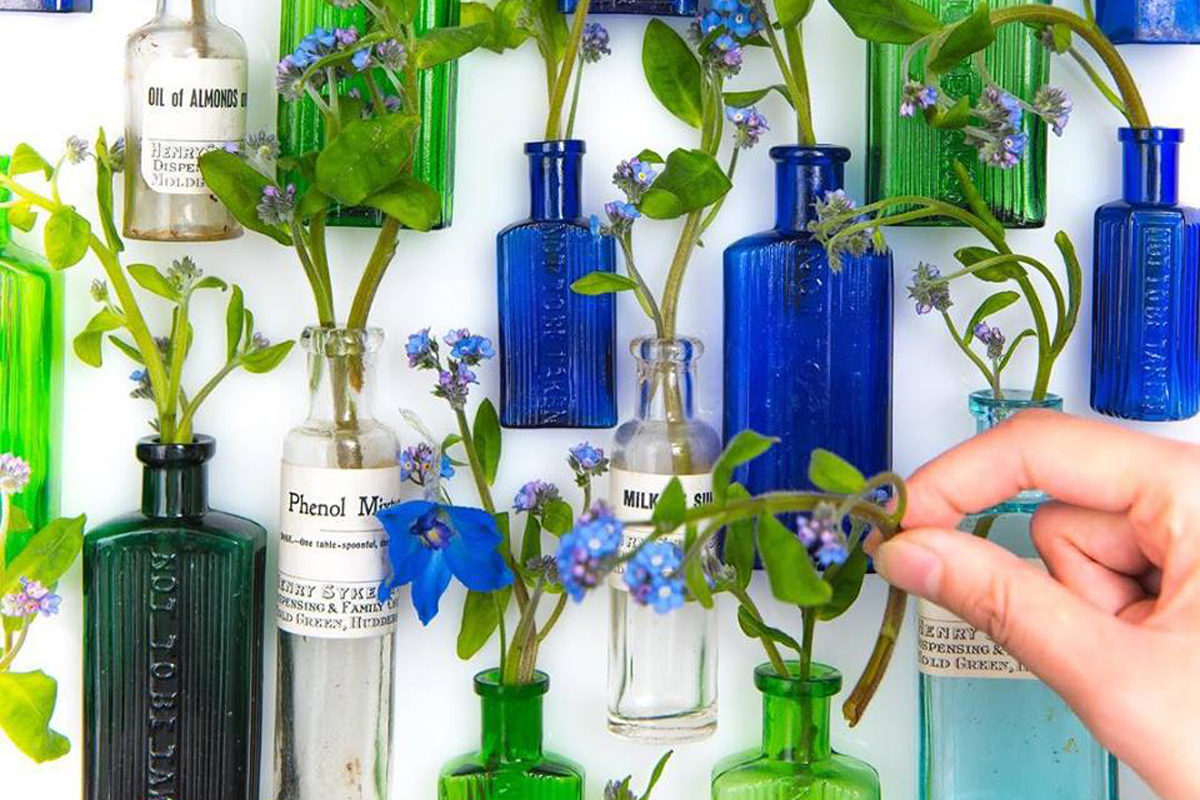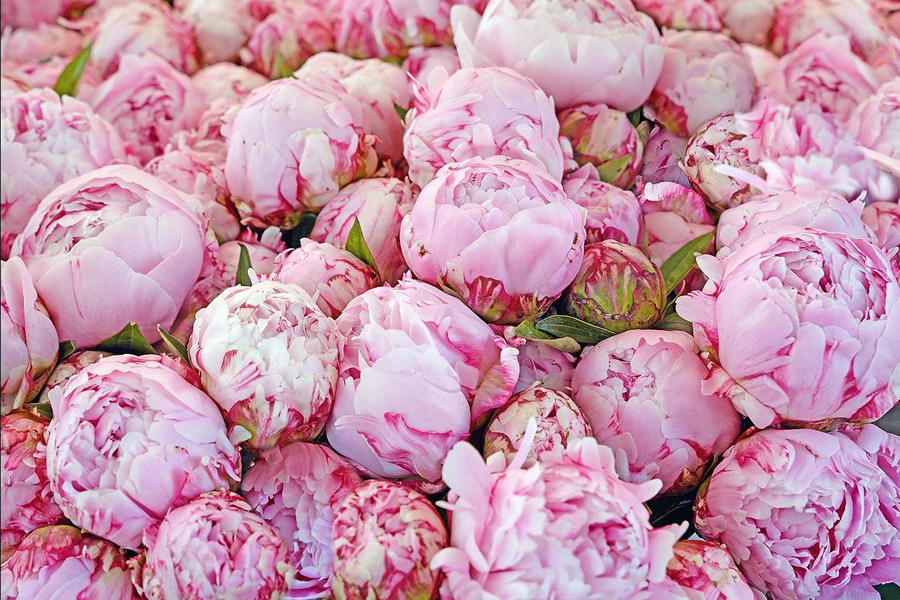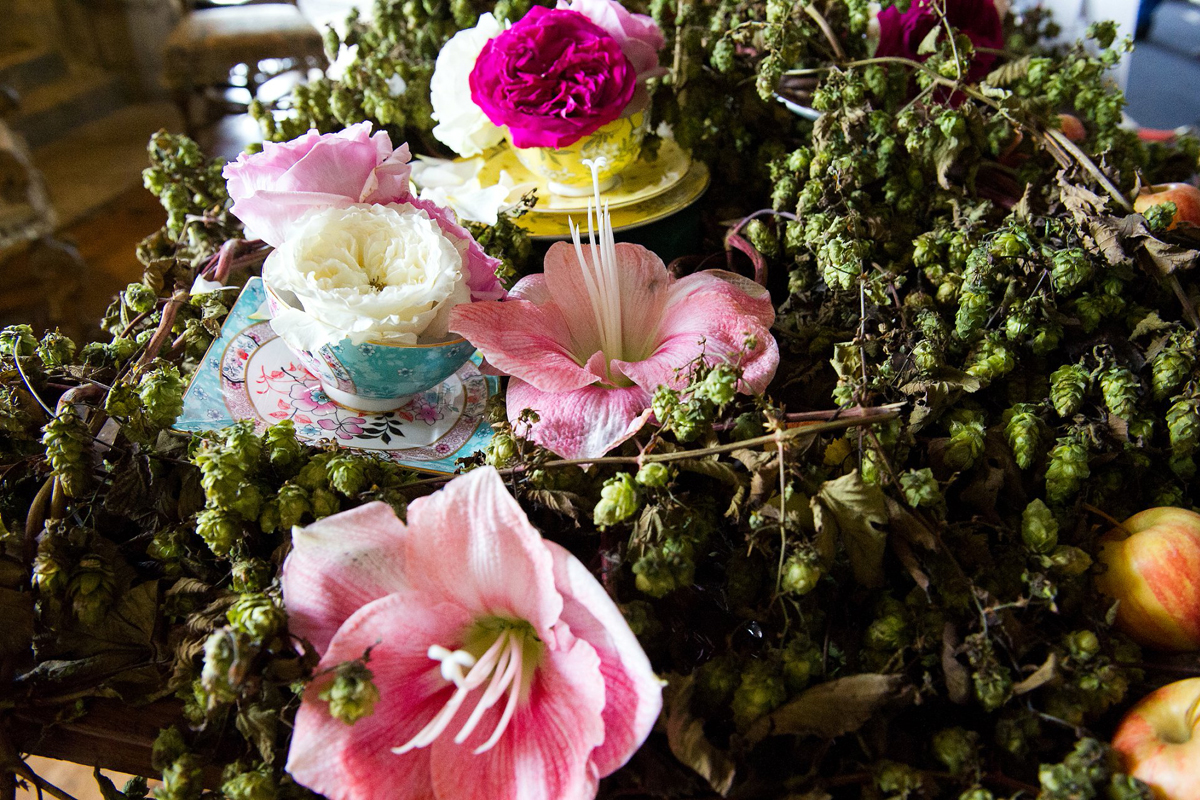Flowers are for everyone, and as Hong Kong-based floral maestro Solomon Leong will demonstrate, a pretty bouquet needn’t be overly dramatic or complex.
The founder of Solomon Bloemen Flower School has done floristry for weddings, events, and exhibitions around town and abroad, and counts the likes of Island Shangri-La, Lee Gardens, and Lalique as clients. Some of his creations can be found on Instagram, a showcase of daily inspiration and art de vivre. Here, the expert florist shows us how to create beautiful and soulful floral creations at home, using a few simple tricks and a handful of tools. Read on to up your floral game for that upcoming house party.
See more: A peach blossom hanging planter tutorial by Berinmade’s Erin Hung

1. Pick a vessel.
Before you start, spend some time selecting your container, as it forms the foundation for showcasing your flowers. A sleek and transparent vessel suits flowers with long and elegant stems such as calla lilies and phalaenopsis orchids, whereas a delicate, vintage teacup is best for petite bluebells and lilies of the valley.
2. Set the mood with colour.
Select the colours of the flowers based on the mood you wish to create. Mainly divided into two groups, they are composed of the warm group (reds, oranges, and browns) and the cool group (blues and purples). For an eclectic look, try a mélange of cool and warm colours.
3. Decide on quantity – and stick to odd numbers.
It is easier and more visually attractive to group vases and flowers into the odd numbers of 3, 5, and 7 in an arrangement. Try to avoid even numbers such as 2, 4 and 6.
See more: 5 expert tips on styling your outdoor space

4. Don’t forget the 2:3 ratio.
As a general rule of thumb, stick to the 2 to 3 ratio when creating your floral arrangement. Also known as The Golden Mean, this is the ideal ratio to follow when determining the height of flowers in relation to each other, as well as the width of an arrangement. An example of the 2 to 3 ratio: 2 is the container height, 3 is the flower height, and 5 is the overall arrangement height.
5. Create drama with repetition.
For an arrangement with maximum impact, use repetition. Gather diverse small containers and fill them with a single flower type. Alternatively, a group of similar vases filled with varying blooms creates interest and drama, too.
6. Create interest with variation.
Follow this simple trick so you will never again be overwhelmed at the flower market: group together the flowers you like according to their shape and form. For example, round roses and peonies on one side, and long and lithe amaryllis and calla lilies on the other. Then add another group of filler flowers for emphasis. Combine your selection following the Golden Mean: two groups of round flowers to three groups of long flowers.

Like human beings, flowers thrive on TLC. Keep your blooms clean, well ventilated, and hydrated.
7. Once you return from the flower shop, cut the flower stems and immerse them in deep, cool water to hydrate them prior to arranging.
For flower arrangements in vases, the water needs to be changed everyday, while the flower stems need to be cut daily. On hotter days, try adding a few drops of kitchen bleach to the water to keep bacterial growth at bay. Bear this in mind when arranging mixed flower types, as dirty water easily leads to cross contamination. Flower food, powder, or liquid are all suitable alternatives.
Take out faded flowers as soon as they appear in order to allow the other buds to continue blossoming.
8. Cut stems according to flower type.
Different flower types require different stem cutting methods.
Thick, woody stems such as lilacs, hydrangeas, and prunus usually require their stems to be split, increasing the surface area for higher water uptake. Herbaceous stems such as yarrow, gerberas, and stocks need to be cut in a sharp slant, so that the plant cells remain open for taking in water.
See more: The finest florists in Hong Kong that deliver

To start creating your own floral masterpieces, here are all the basic tools you need:
Squeezy bottle – an absolute necessity if you are creating a compact arrangement with limited watering space. This is also handy for filling up pre-packed bouquets or vases with a narrow opening.
Sprayer – helps to freshen up flowers in bouquets and arrangements.
Atomiser – this is perfect for hydrating small and delicate flowers such as lilies of the valley or snowdrops, as the water droplets are much finer than those from a normal sprayer.
Floral snips and secateurs – for cutting stems. Paper covered wire – used to bind bouquets.
A glass container (cube, fish bowl, or bottle) – universally flattering and versatile, this container suits most flower types, and is easy to find.






